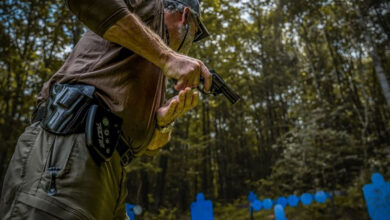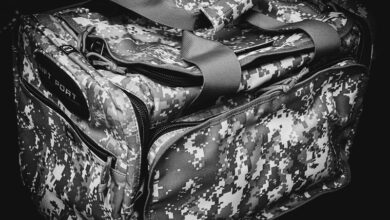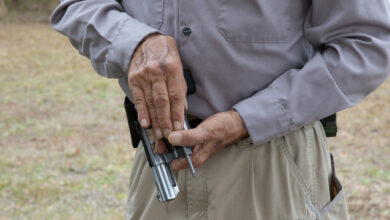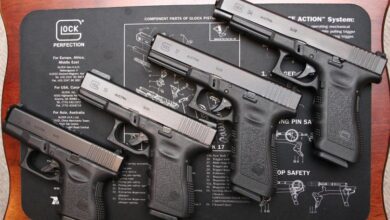Understanding Trigger Reset: Three Spots on a Bell Curve
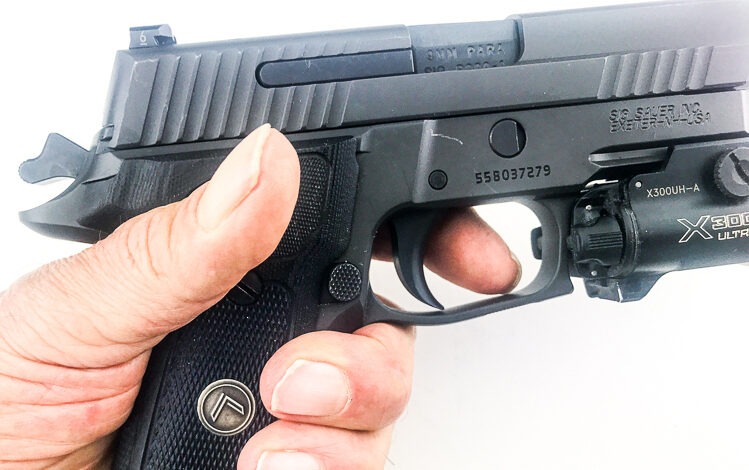
In the photo below, the Sig Sauer P229 Legion 9mm has been fired. The pistol has cycled, re-cocking the hammer, and the finger is still holding the trigger to the rear. What now? Resetting the trigger, of course, and the shooter has three options.
We are looking at three points on a bell curve. If the finger comes all the way off the trigger, it will generally be hit with an impact: marksmanship instructors call that “trigger slap.” If the finger has followed the trigger all the way forward from the last shot but still maintained contact, the best term for that is “trigger weld.” And third, if the trigger has returned just enough to reset the sear for the next shot, different instructors use different terms for it: “riding the link,” “riding the sear,” or “riding the reset.”
Many do not understand that each technique has a place in shooting because they don’t understand what those places are, and many end up using the wrong tool for the given task. Let’s examine those techniques one at a time.
Trigger Slap
If you did a word association test with most firearms instructors and you said “trigger slap,” they would answer “BAD!” and most of the time, most people, especially new shooters, would be correct. If you’re firing a carry handgun that weighs less than two pounds, and your finger comes off the trigger and then rapidly slaps it with five to six or more pounds of pressure, nature will take its course, and that impact will deviate the muzzle from point of aim and send the bullet someplace you didn’t want it to go. For a high ninetieth percent of shooters, it’s a bad habit.
Controlled Trigger Slap
However, there are some grandmaster shooters who’ve proven that what they call a controlled trigger slap actually can work. Let me invoke three great master handgunners on that topic.
The first two are world champions Rob Leatham and Todd Jarrett. Both use the controlled trigger slap only on forgiving targets, by which I mean the hit zone they’re aiming for is either large or close, or both. Their rationale is that in the lofty arenas where hundredths of a second can separate the World Champ from second place, the gross motor skill of just whacking the trigger can be accomplished faster than any other technique. This requires a very tight grip on the pistol and works best with a very light trigger pull. When I interviewed Rob for the ProArms Podcast he told me he grips his pistol “As hard as I can.” When I asked the pull weight on his current Springfield Armory 1911, he replied, “One pound.” Significantly, when I asked him what he thought about using such a light pull on a defense gun, he answered, “You’d be out of your mind.”
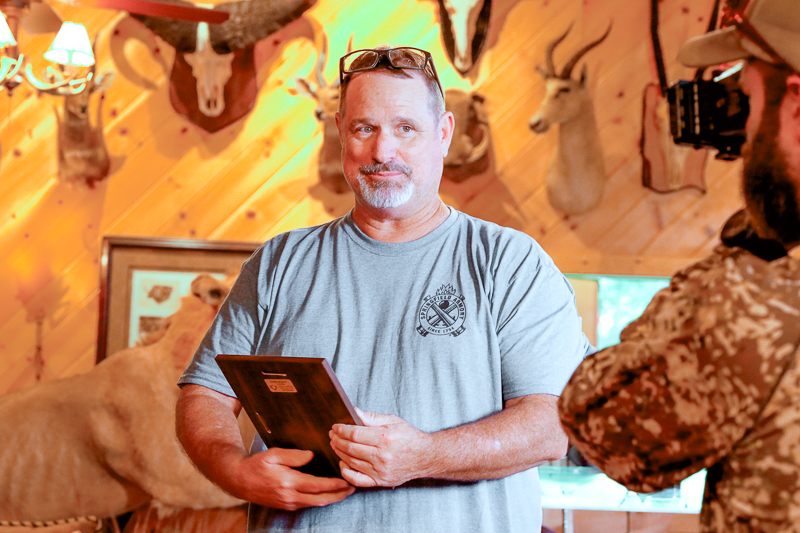
Another master of the controlled trigger slap is my friend Bill Wilson, who became famous for winning national-level pistol matches even before he earned acclaim for his gunsmithing and then for the prestigious Wilson Combat firearms his company manufactures today. If you watch him shoot in the many videos on his Wilson Combat YouTube channel, you’ll see that with each shot, his finger comes completely off the trigger and then returns. But if you watch those videos all the way through, you’ll see that he’s still hitting what he aims at, distance and target size notwithstanding. Bill explains that he started shooting double action with Colt Python revolvers, which required a completed forward trigger return for the next shot to be fired. He has simply learned to distribute trigger pressure faster than most people.
Riding the Link
Letting the trigger come just enough forward to re-set goes back to bulls-eye shooting long, long ago, when the closest target was 25 yards away, and the fastest rapid-fire requirement was five shots in ten seconds starting with the gun already on target and fired one-handed. Sometime in the 1970s, it migrated into defensive pistol training, and some devout adherents recommended it with religious zeal as if it was going to be the secret to winning World War III. In theory, it made sense: we’re looking for good hits fast. Riding the link makes for a shorter trigger movement than allowing it to return all the way forward and also requires less movement to fire the next shot. After all, isn’t the cornerstone of a time and motion study the fact that motion takes time?
Inherent Human Issues
The problem comes with ergonomics and human factors. If you are training to fight for your life, you must understand the “fight or flight” response, first quantified by Dr. Walter Cannon at Harvard Medical School more than a century ago. As the adrenaline dump kicks in, physical strength very quickly increases to almost superhuman proportions, but fine motor skills go down the toilet just as quickly. The real reason we become so clumsy under life-threatening stress is that vasoconstriction occurs simultaneously: the body redirects blood flow away from the extremities and into the “core” to sort of “fuel the furnace” for extreme exertion. This is why scared Caucasians are seen to go deathly pale at such moments and why our dexterity deserts us. All of a sudden, we can no longer feel that tiny “tick” of the reset.

And at the same time, strength is increasing. In the human hand, the flexor muscles (which pull the trigger) are stronger than the extensor muscles (which we use to return the trigger). The result is that the trigger doesn’t get to reset at all until the brain figures out what’s going on.
In our second-level classes, we do a drill we call the Speed Race in which the shooter starts on target and, on the beep, fires five shots from seven yards. Winning times with semi-automatics run well under one second. And Every. Single. Time, one or more shooters trying to ride the link will stutter on the trigger for that reason and lose the contest because instead of BANGBANGBANGBANGBANG they went BANGBANG –BANGBANGBANG from trying to ride the link.
It happens in competition shooting. I invoke another World Champion, Ben Stoeger, and suggest you watch his YouTube video on the topic, titled “Riding the Re-Set is Dumb,” here:
For those more oriented to the street than the competition range, read the late, great gunfighter and trainer Pat Rogers, who, in an article in SWAT Magazine titled “Distance Shooting: the Myth of the Average Engagement,” had this to say: “Legions of shooters have told me that an M&P, Glock, XD or whatever has a terrible trigger reset, but when I ask them to define it, they can’t. And if I ask them why a trigger reset is important, they parrot what they’ve heard rather than what they know. There’s a time and place for deliberately resetting the trigger, for example, shooting a slow-fire string at 25 yards. But if you’re going to guns with somebody at bad breath distance, that deliberate reset will only slow you down.”
The Middle of the Bell Curve: Trigger Weld
The points made above explain why, for decades of teaching defensive shooting to police and armed citizens, I’ve gone with the middle ground of the bell curve, “trigger weld.” Let the trigger come all the way forward as if with a double-action revolver, but don’t take your finger off that trigger. Maintaining contact will prevent trigger slap from pulling you off target, but it guarantees that you’ll get your shot off every single time.
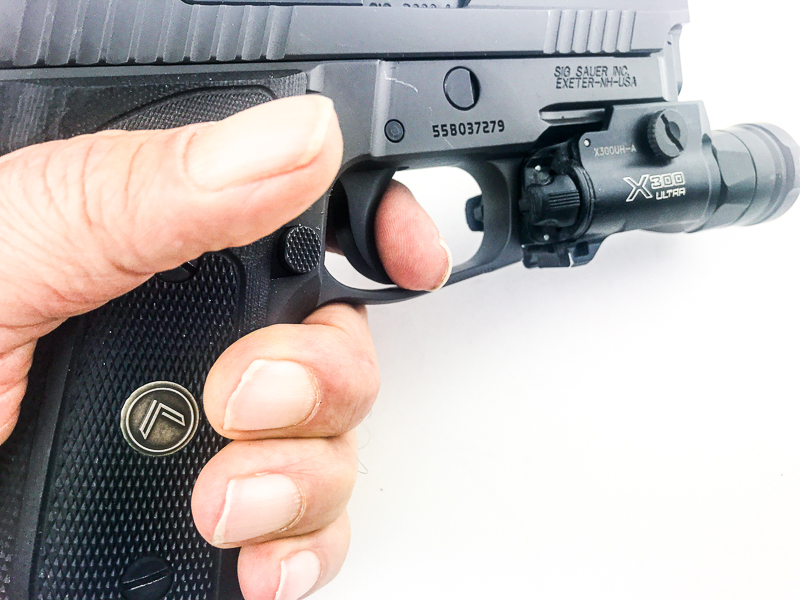
As noted, each of the above techniques has a place. I’ve had good luck at Glock’s GSSF matches. One of the the GSSF stages with the clock running but accuracy also more important than in the run-and-gun sports is the Five-To-Glock stage with a quintet of targets at different distances. I’ve won prize guns there while using all three methods: controlled trigger slap on the closest targets, riding the link on the farthest (two shots on each required), and trigger weld on the intermediate distance targets.
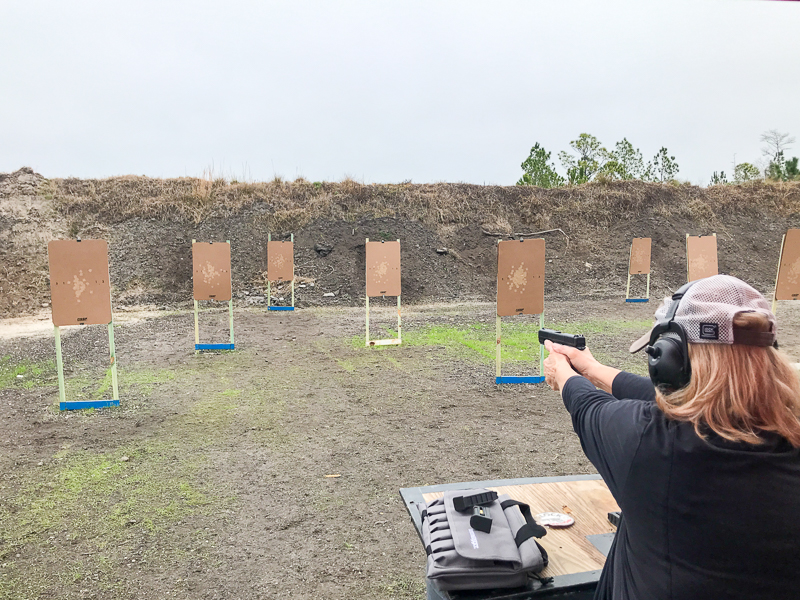
It is wise to know all three methods and where each is best applied. As a general rule, the decades have taught this writer that if there is going to be only one core technique for running the trigger, particularly for self-defense, Trigger Weld is the most reliable and fail-safe.
The post Understanding Trigger Reset: Three Spots on a Bell Curve appeared first on The Mag Life.
Read the full article here

